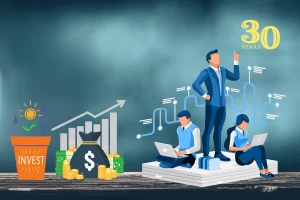
Let’s be honest. For a long time, investing felt like a sterile game. The only score that mattered was the number in your portfolio, detached from the real world. But for millennials, that old script just doesn’t cut it. You’re a generation that shops with purpose, advocates for change, and demands transparency.
So why would your investment strategy be any different?
Enter sustainable and impact investing. It’s not just a niche trend; it’s a fundamental shift. It’s about aligning your financial future with your values. Think of it as voting with your dollars, but for the long haul. You’re not just buying a stock; you’re supporting a piece of the future you want to see.
What Exactly Are We Talking About? ESG, SRI, and Impact
The terminology can feel like alphabet soup at first—ESG, SRI, impact. Let’s break it down without the finance-speak.
ESG Investing: The Risk Manager
ESG stands for Environmental, Social, and Governance. It’s a framework for evaluating companies on factors beyond their profit margins.
- Environmental: How does a company treat the planet? This looks at carbon emissions, water usage, waste management.
- Social: How does it treat people? This covers labor practices, diversity and inclusion, data privacy, and community relations.
- Governance: How is the company run? Think executive pay, shareholder rights, and board diversity.
ESG is, in many ways, about smart risk management. A company with poor environmental practices might face hefty fines. One with bad social governance might suffer a public boycott. Investing with an ESG lens helps you spot these risks—and opportunities—early.
Impact Investing: The Changemaker
If ESG is about avoiding the bad, impact investing is actively chasing the good. The goal here is to generate specific, measurable, positive social or environmental benefits alongside a financial return.
You’re intentionally putting your capital to work in areas like renewable energy projects, affordable housing, microfinance in developing nations, or sustainable agriculture. The financial return might be competitive, or sometimes slightly below market-rate, but the direct impact is a core part of the deal.
Why This Resonates with the Millennial Mindset
It’s not a mystery. This approach to investing clicks with millennial values on a deep level. You’ve inherited a world with complex challenges—climate change, social inequality, you name it. There’s a palpable desire to be part of the solution, not a bystander.
And here’s a crucial point: the old myth that you have to sacrifice returns to do good is, well, pretty outdated. In fact, numerous studies now suggest that companies with strong ESG profiles can be just as profitable, if not more so, than their less-conscious peers. They’re often better managed, more innovative, and attract top talent. They’re built for the future.
How to Actually Start Your Sustainable Investing Journey
Okay, you’re sold on the idea. But how do you move from intention to action? It’s easier than you think.
1. Define Your Personal “Why”
What issues keep you up at night? Is it climate change? Racial justice? Gender equality? Your portfolio should reflect your personal passions. There’s no single right answer. This is your strategy.
2. Explore the Vehicles
You don’t need to be a stock-picking expert. Honestly, most people shouldn’t be. The easiest entry point is through ESG and impact-focused funds.
- ESG ETFs and Mutual Funds: These are baskets of stocks that have been screened for ESG criteria. They offer instant diversification and are as easy to buy as any other fund. Look for low fees (expense ratios) and read the fund’s description to see if its focus matches yours.
- Robo-Advisors with ESG Portfolios: Platforms like Betterment and Wealthfront now offer dedicated sustainable portfolios. You answer a few questions, and they handle the rest.
- Direct Impact Investments: For the more advanced, platforms like Swell or Calvert Impact Capital allow for direct investment in specific themes or community projects.
3. Do Your Homework (A Little Bit)
Beware of “greenwashing”—when a company exaggerates its environmental or social credentials. Look at the fund’s top holdings. Does it include companies that contradict the fund’s stated mission? A little digging goes a long way.
| Strategy | Best For | Example |
| ESG Integration | Investors who want to manage risk and invest in well-run companies for the long term. | An ETF that tracks a broad index of companies with high ESG scores. |
| Thematic Investing | Those passionate about a specific cause, like clean water or gender diversity. | A fund that exclusively invests in companies advancing women in leadership. |
| Impact-First | Investors willing to potentially accept a lower financial return for a direct, measurable social/environmental benefit. | A community development note that funds local affordable housing. |
The Future is Already Here
The data doesn’t lie. Sustainable investing isn’t a fringe movement anymore. Trillions of dollars are now flowing into these strategies. This massive shift is changing how corporations behave. They are being held accountable. They’re publishing sustainability reports, setting net-zero targets, and diversifying their boards because investors like you are demanding it.
Your capital has power. A real, tangible influence. It’s a lever for change that previous generations often overlooked.
So, as you start—or continue—building your financial life, consider the legacy you’re building with every dollar. It’s not just about retiring comfortably, though that’s a fantastic goal. It’s about retiring into a world you’re proud to have helped shape. And that, you know, might just be the best return on investment of all.








